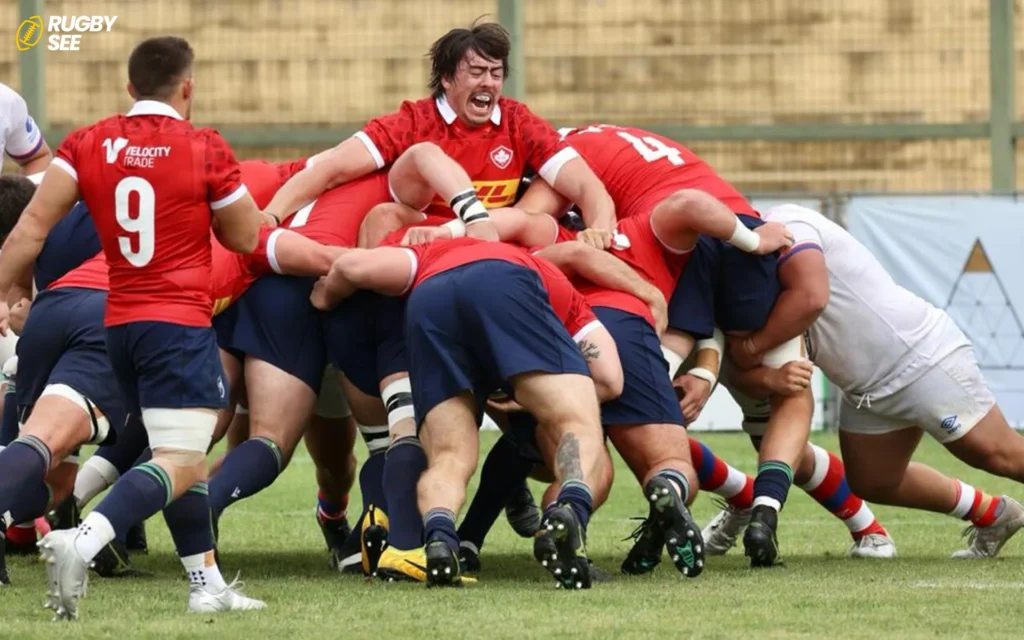Rugby and American football are two of the most popular contact sports globally, known for their physicality, intensity, and excitement. While both sports share similarities in gameplay and objectives, they also have distinct differences, including rules, equipment, and level of physical contact. One of the most debated topics surrounding these sports is their respective levels of danger and risk of injury. In this article, we will explore and compare the inherent dangers associated with rugby and American football, shedding light on the factors that contribute to their perceived levels of risk.
Understanding the Nature of Rugby and American Football:
Before delving into the comparison, it’s essential to understand the fundamental differences between rugby and American football:
Rugby: Originating in England in the early 19th century, rugby is a full-contact sport played between two teams of 15 players each. The objective is to score points by carrying, passing, kicking, or grounding the ball in the opponent’s territory. Players can pass the ball backward or laterally but cannot pass it forward. Rugby is known for its continuous gameplay and minimal stoppages compared to American football.
American Football: Developed in the United States, American football is a highly structured and strategic sport played between two teams of 11 players each. The primary objective is to advance the ball down the field and score points by crossing the opponent’s goal line or kicking it through the goalposts. American football features frequent stoppages, complex play formations, and specialized roles for offense, defense, and special teams.

Comparing the Risk Factors:
Now, let’s examine the factors that contribute to the perceived danger of rugby and American football:
1. Physical Contact:
- Rugby: Rugby is renowned for its physicality, with players engaging in tackles, rucks, mauls, and scrums throughout the game. Tackling in rugby involves wrapping the arms around the opponent and bringing them to the ground. While rugby tackles can be intense, players are not allowed to make contact above the shoulders, reducing the risk of head and neck injuries.
- American Football: American football also involves significant physical contact, with players wearing helmets, shoulder pads, and other protective gear. Tackling in American football can be forceful, often involving collisions at high speeds. However, the use of helmets and pads can create a false sense of security and may lead to more aggressive tackling techniques, increasing the risk of head and spine injuries and if you want to know about The player who has Most Rugby Caps read Who has the most caps in rugby?
2. Protective Equipment:
- Rugby: In rugby, players wear minimal protective equipment, typically consisting of a mouthguard, optional headgear, and lightweight padding for specific positions. The lack of extensive protective gear encourages players to focus on proper technique and skillful tackling rather than relying on equipment to absorb impacts.
- American Football: American football players wear extensive protective gear, including helmets, shoulder pads, thigh pads, knee pads, and hip pads. While this equipment provides essential protection against impacts, it can also lead to a false sense of invincibility and encourage riskier playing styles.
3. Rules and Gameplay:
- Rugby: Rugby emphasizes player safety through its rules and regulations, with strict guidelines on tackling technique, dangerous play, and foul play. Referees actively monitor the game and penalize infractions to ensure fair and safe competition.
- American Football: While American football has rules governing player safety, including penalties for illegal hits and targeting, the sport’s highly physical nature can sometimes lead to dangerous collisions and injuries. The stop-and-start nature of the game can also contribute to fatigue and increased risk of injury during intense plays.

4. Concussion Risk:
- Rugby: Concussions are a concern in rugby, particularly during tackles, collisions, and scrums. While the absence of helmets reduces the risk of helmet-to-helmet contact, rugby players are still susceptible to head injuries due to impacts with the ground or other players.
- American Football: Concussions are a significant issue in American football, with players at all levels experiencing head injuries due to high-impact collisions. The use of helmets, while intended to provide protection, can also increase the force of impacts and contribute to the severity of concussions.
Conclusion:
In conclusion, both rugby and American football carry inherent risks of injury due to their physical nature and high-impact gameplay. However, the level and nature of these risks differ based on factors such as rules, protective equipment, and playing style. While rugby emphasizes skillful tackling, continuous gameplay, and minimal protective gear, American football relies heavily on specialized equipment, complex plays, and strategic stoppages. Ultimately, the perceived danger of each sport is subjective and depends on various factors, including individual player experience, coaching, and adherence to safety guidelines.
5. Injury Rates and Severity:
- Rugby: While rugby is a physical sport, studies have shown that it has lower overall injury rates compared to American football. However, rugby injuries tend to be more diverse, including sprains, strains, fractures, and lacerations. The absence of protective gear in rugby means that players are more exposed to direct contact with opponents and the playing surface, leading to a higher risk of abrasions and cuts.
- American Football: American football has higher reported injury rates compared to rugby, with a significant focus on head and neck injuries, including concussions and spinal injuries. The use of helmets and pads provides essential protection against these types of injuries but does not eliminate the risk entirely. Additionally, the repetitive nature of collisions in American football can contribute to long-term health issues such as chronic traumatic encephalopathy (CTE).
6. Long-Term Health Considerations:
- Rugby: While rugby players are susceptible to acute injuries during matches, the sport may have fewer long-term health implications compared to American football. The emphasis on skillful tackling and continuous gameplay in rugby may reduce the risk of repetitive head trauma and degenerative brain diseases associated with American football.
- American Football: American football has come under scrutiny in recent years due to concerns about the long-term health effects of repetitive head trauma. Studies have linked concussions and subconcussive impacts in football to an increased risk of neurodegenerative diseases such as CTE, Alzheimer’s, and Parkinson’s. The physical toll of the sport, combined with the prevalence of high-impact collisions, raises questions about player safety and welfare.

7. Cultural and Societal Factors:
- Rugby: Rugby is deeply ingrained in the cultural fabric of many countries, with a rich history and tradition spanning generations. The sport fosters values such as camaraderie, respect, and sportsmanship, emphasizing teamwork and mutual support among players. Rugby’s global appeal transcends geographical and cultural boundaries, contributing to its status as a unifying force in diverse communities worldwide.
- American Football: American football holds a prominent place in American culture, with millions of fans tuning in to watch games at the amateur, collegiate, and professional levels. The sport’s popularity is fueled by its spectacle, athleticism, and entertainment value, attracting players and spectators from all walks of life. However, concerns about player safety and the sport’s impact on health have led to calls for reforms and increased awareness of safety measures.
Conclusion:
In comparing the dangers of rugby and American football, it’s essential to consider a range of factors, including injury rates, protective equipment, gameplay rules, and long-term health implications. While both sports carry inherent risks of injury due to their physical nature, the level and type of risk vary based on these factors and others and if you want to know about Best Rugby Player in the World read Best rugby player in the world?
Ultimately, the decision of which sport is “more dangerous” is subjective and depends on individual perspectives, experiences, and priorities. Both rugby and American football offer unique challenges, thrills, and opportunities for athletes, coaches, and fans alike. Whether you’re a rugby enthusiast or a football fanatic, prioritizing player safety and well-being should always be a top priority.










